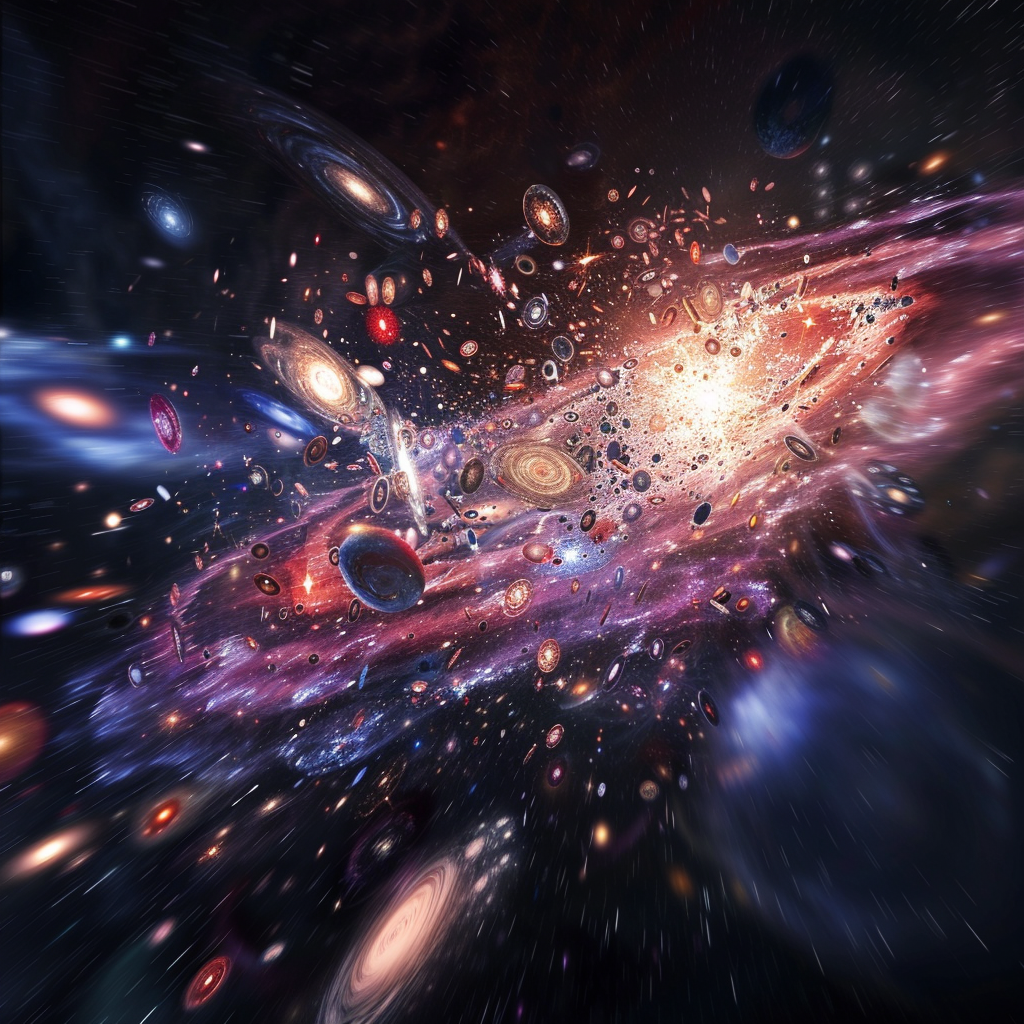The discovery of the cosmic background radiation by Penzies and Wilson in 1965 strongly supports the Big Bang cosmology and has had a major impact on modern astronomy and cosmology as a signal that provides important clues to the origin and evolution of the universe.
In 1965, Penzies and Wilson, researchers at the Bell Telephone Company, were using antennas to search for long-distance radio and cosmic signals when they noticed that a constant intensity of radio noise was always picked up. They realized that the noise was a signal coming to Earth from space at roughly the same intensity across all directions of the sky, but they didn’t know what it was. Around the same time, other scientists predicted that if the universe created by the Big Bang had cooled as it expanded, there would be some light that should remain in the present universe and were looking for it. This discovery provided new clues to the origin and evolution of the universe. They sparked an insatiable curiosity about how vast and complex the universe is and what secrets it hides from us.
The Big Bang cosmology holds that the universe began about 13.7 billion years ago in a massive explosion with very high density and temperature. In the first three minutes of the Big Bang, photons, electrons, protons (hydrogen nuclei), and helium nuclei were created. The events that occurred in this short period of time determined the physical properties of the universe and had a profound effect on its subsequent evolution. Protons and helium nuclei, which have a positive charge, try to combine with electrons, which have a negative charge, to form hydrogen and helium atoms, but at high temperatures, electrons move at very high speeds and are not easily captured by atomic nuclei. Therefore, in the early days of the universe, electrons were able to move freely through space without being captured by protons.
These electrons, which move completely independently of protons, are called free electrons. In the early days of the Big Bang, light was trapped in matter by free electrons and could not escape. Since light could not escape, the universe at this time was very opaque and could not be seen through. As the universe continued to expand, about 400,000 years after its birth, the gaps between the free electrons widened, allowing light to escape through them, and the universe began to become increasingly transparent. This was a very dynamic and rapidly changing time for the universe, as the temperature of the universe dropped below 3,000 K, causing free electrons to be captured and bonded to protons and helium nuclei, creating hydrogen and helium atoms. This critical turning point contributed greatly to the formation of the overall structure of the universe.

More specifically, the universe suddenly became transparent as free electrons combined with protons and helium nuclei to form atoms. With the obstacle of free electrons suddenly gone from the path of light, light separated from matter and began to travel through space unimpeded. This is when the universe became completely transparent, and it is called the “recombination period”. At this time, countless light that had been blocked by free electrons began to sail freely and spread uniformly throughout the universe, which is called the cosmic background radiation. The cosmic background radiation was 3,000 K at the time of its creation, and then cooled as the universe expanded on its way to Earth, down to its current temperature of 2.7 K. In other words, the remnants of a very hot Big Bang universe remain today as very cold cosmic background radiation, about 1,100 times cooler than it was at the time of the recombination, and it was this signal that Penzies and Wilson identified in the radio noise.
The discovery of the cosmic background radiation revolutionized modern astronomy and cosmology. It was not just radio noise, but a signal that provided crucial information for understanding the origin and structure of the universe. The existence of cosmic background radiation, which was created long before galaxies formed and comes to Earth from all directions in the sky, provides strong evidence for the Big Bang cosmology. These discoveries have also provided clues to other important questions in cosmology. For example, it led to research into how cosmic background radiation influenced the formation of the structure of the universe and what role it played in the formation of the large-scale structure of the universe and the formation of galaxies. In modern cosmology, cosmic background radiation is not just a remnant of the past, but is now an essential tool for understanding the structure and physical laws of the universe.
As such, it serves as an important bridge between the past and present, and is an integral part of our deeper understanding of the universe. By analyzing this signal, scientists are reconstructing the early state of the universe and unlocking more secrets about how it has evolved. These studies enrich our understanding of the universe and play an important role in guiding future research. Cosmic background radiation is not just a relic of the past, but an important guide to current and future cosmological research.
 I’m a blog writer. I want to write articles that touch people’s hearts. I love Coca-Cola, coffee, reading and traveling. I hope you find happiness through my writing.
I’m a blog writer. I want to write articles that touch people’s hearts. I love Coca-Cola, coffee, reading and traveling. I hope you find happiness through my writing.